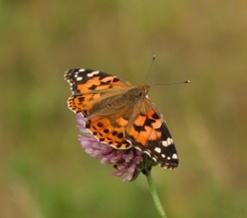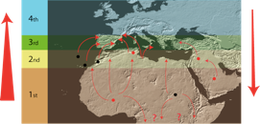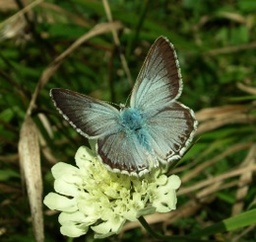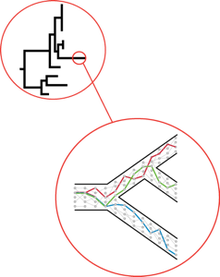Ongoing Funded Projects
Genomic and epigenomic signatures of migration in butterflies (MIGRASPHERE)
Integrating emerging technology for automated forecasting and monitoring of migratory insect population dynamics and connectivity
Insect dispersal in open seas
Behavioral and ecological genomics of insect migration (ENTOMIGROME)
Eco-evolutionary responses of animals to global change (EcoEvoChange)
Taxonomic and molecular characterization of Lepidoptera, Odonata, and their trans-Saharan migratory species in two protected areas of the African Sahel
Past Funded Projects
Bio-regionalization of the Afrotropics: a comparative phylogeographic framework for widespread butterflies
An interdisciplinary scheme to advance in the field of ecology and evolution of insect migration
Phenotype-genotype associations for migratory behavior in insects: combining isotope geolocation and next-generation sequencing tools
Creación de una plataforma digital de referencia para divulgación y participación ciudadana en el monitoreo de mariposas migratorias
Phylogeography, genomics and macroecology of insect migration
The longest butterfly migration: monitoring and conservation of the Pained Lady butterfly breeding sanctuaries in tropical Africa
Mediterranean butterflies meet the lions: an African monitoring network to study and preserve trans-Saharian migrations
The genetics of migratory behaviour in butterflies
The Palearctic-African butterfly migration system: stable isotope evidence for spring colonization of Europe from the Sub-Sahara by Vanessa cardui
MIGRATION - The most cosmopolitan animal migration: phylogeography and population genomics of the butterfly Vanessa cardui
Putnam Expedition Grant - ASIA
Putnam Expedition Grant - NORTH AMERICA
|
Research Outline
• Phylogeography, genomics and macroecology of insect migration Insect migratory strategies have repeatedly evolved across taxa as an adaptation to heterogenetiy in space and time. I am currently studying the evolutionary fundamentals of migration either at a genetic and macroecological levels. I am conducting a worldwide phylogeographic study of the migratory butterfly Vanessa cardui (the Painted Lady), which represents what is potentially the widest distributional range among terrestrial migratory species. I plan to track worldwide migratory routes using new technological and theoretical advances in next-generation sequencing, genomic analysis, coalescent-based phylogeography and ecological modelling approaches to make a comprehensive study of V. cardui genetic population structure and migratory dynamics. • Evolution and diversification of butterflies The family Lycaenidae is further characterized by a remarkable life history diversity, including an unusually broad range of host plants, a cosmopolitan distribution as a result of complex and multiple colonizations or explosive chromosome evolution that has evolved independently in several lineages. Even a notorious percentage of species have abandoned herbivory and are obligately aphytophagous for all or some portion of their lifetimes, typically consuming ants or ant-tended homopterans. Some clades present measurable bursts of diversification in some ecological regions that may be related to the colonization of arid habitats and the ability to perform diapause. The group displays an interesting pattern of wing color evolution as rapid color changes that may reflect reinforcement or ecological adaptation. Thus, the behavioral and ecological diversity of the Lycaenidae make them a prolific model system for comparative studies of life history evolution, ecology, biogeography, conservation, cytogenetics, physiology and genetics of color vision, climate change and symbiosis. I am interested both at macroecological and specific levels, as understanding speciation and diversification through chromosomal rearrangements, the phylogenetic implications of aphytophagy or the origin of the complex current biogeography. My approaches include novel combinations of different data sources (DNA, RADseq, karyotype, morphology, ecology and phylogeographic models). Within the Lycaenidae, I am working towards making the subfamily Polyommatinae phylogenetically comprehensible, one of the most taxonomically complex groups of butterflies. • Phylogenetics and molecular systematics It is astonishing to think that a vast mass of biological diversity is yet waiting to be discovered. A beautiful challenge remains, thus, on finding mechanisms to explore and taxonomically address either poorly known regions and habitats or non-popular groups of organisms. Although there should not be the need to justify the importance of discovering world’s remaining biodiversity, to laid out correct taxonomic hypotheses are a prerequisite for any posterior credible research. I am interested on the applicability of molecular phylogenetics to contribute to the improvement of biological classifications, biodiversity assessments and species delimitations. |
Copyright G. Talavera © 2015. All Rights Reserved
























